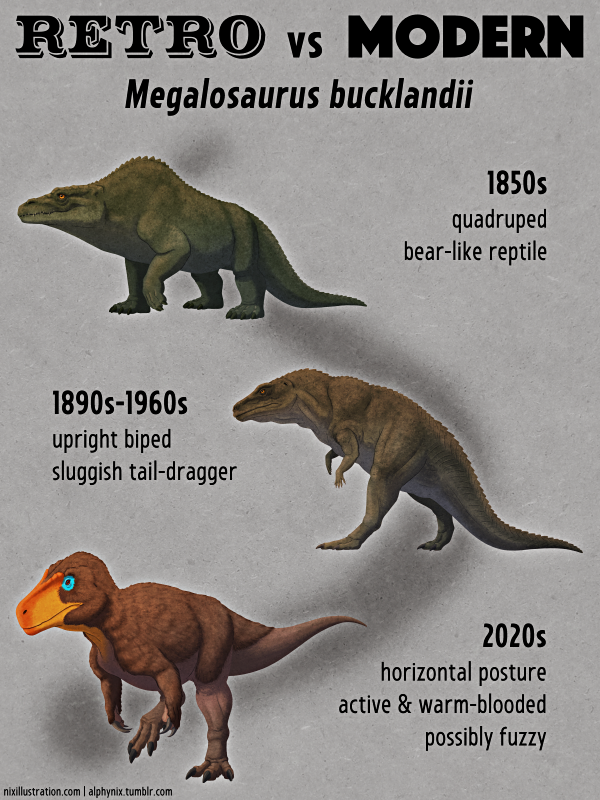It’s time for Retro vs Modern Month!
Every weekday this March we’ll be looking at some examples of how our paleontological understanding and visual depiction of various fossil creatures has evolved over the years.
Starting with…
Retro vs Modern #01: Megalosaurus bucklandii
Fragmentary fossil remains of dinosaurs have been found in Southeast England for hundreds of years, but it wasn’t until the 1820s that they were properly recognized as belonging to an ancient “great lizard” given the name Megalosaurus bucklandii – the very first non-avian dinosaur known to science, almost two decades before the term “dinosaur” would even be created to categorize these extinct animals.
1850s
The Victorian Crystal Palace reconstruction of Megalosaurus is often mocked for its inaccurate bulky appearance, but for its time it was actually an incredibly progressive vision of a predatory dinosaur. It was depicted as an alert, active, bear-like beast with upright muscular limbs, and a humped back based on what later turned out to actually be remains of a different dinosaur species.
1890s-1960s
Discoveries of other large theropod dinosaurs revealed their bipedal posture, and Megalosaurus reconstructions were revised to show an upright kangaroo-like stance. But despite some other early portrayals of active agile dinosaurs, the overall opinion of these animals began to drift during the first half of the 20th century towards sluggish tail-dragging reptiles: depicting them as slow, stupid, cold-blooded, awkward and obsolete evolutionary failures whose extinction had been inevitable.
2020s
Starting in the late 1960s the Dinosaur Renaissance finally began to shift thinking back towards active and warm-blooded dinosaurs, recognizing theropods’ close evolutionary relationship to modern birds and correcting their posture into a horizontal stance with a counterbalancing tail. And while Megalosaurus itself is still only known from fragments, discoveries of more completely preserved relatives like Torvosaurus have given us a much better idea of what it was probably like.
We know know Megalosaurus lived on what at the time was a subtropical island in the shallow western Tethys Sea, about 166 million years ago during the Mid Jurassic. It would have been around 8m long (~26′), with a long narrow snout, and short muscular arms with enlarged meathook-like thumb claws. Its legs and tail would have been fairly thick and bulky, and it may have had a covering of hair-like protofeathers on its body.

